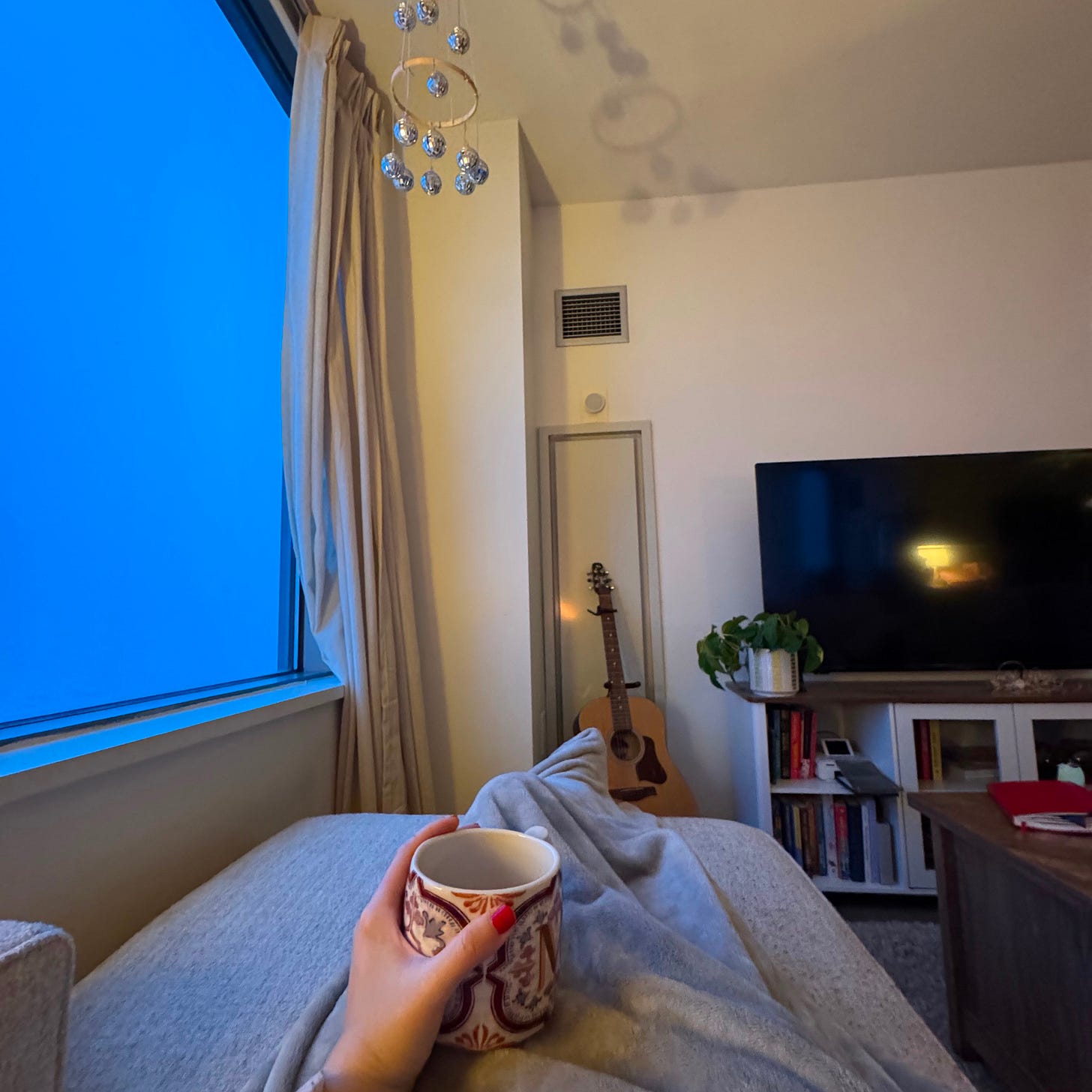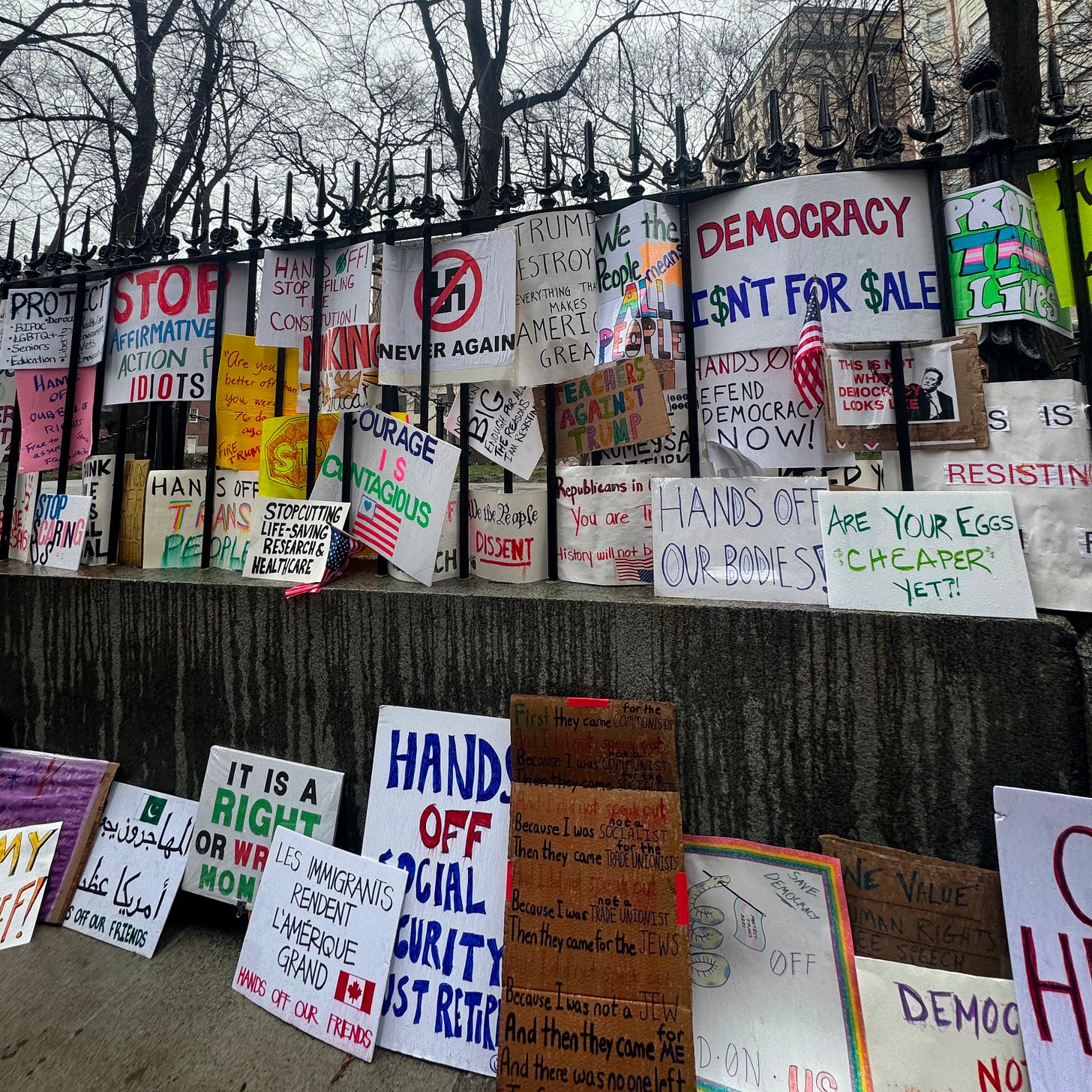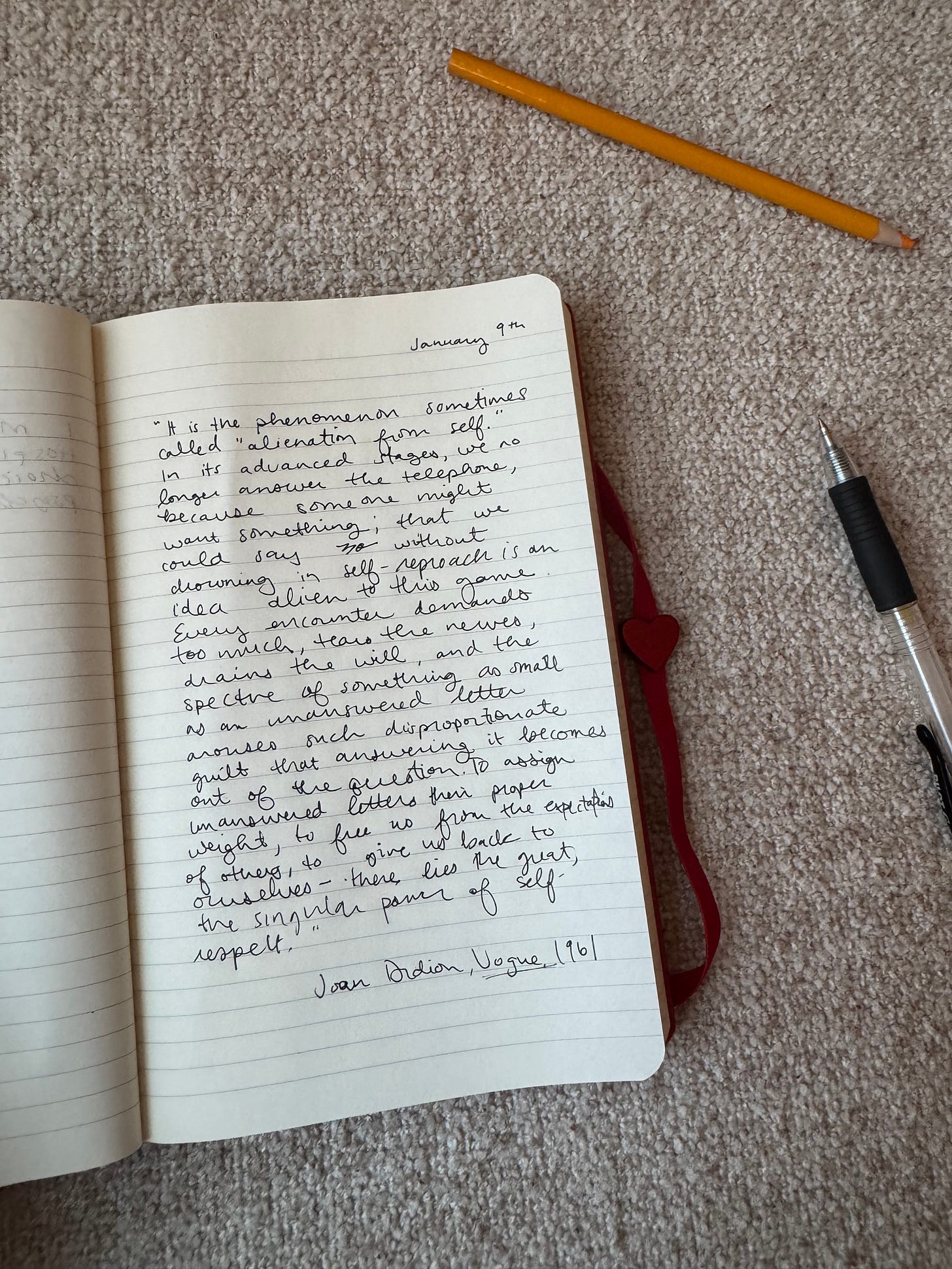Meaningful Consumerism: How to Enjoy More While Buying Less
Unfortunately, influencing does work on us & 10 ways to opt out
As a therapist and writer, the most dynamic moment in my daily work is often the moment when a flat story becomes nuanced and revitalized by complexity. In therapy, it can be in helping co-write a story with someone that looks back at a hard experience and giving words to the ways they positively coped or grew through it. In writing, it is the moment where a view tilts just enough to make the mundane into something unrecognizably strange or alluring. In some ways, therapy and writing have the same purpose: to make what we think we know unknown, and to make the unknown familiar.
This is also the job of marketing, and unfortunately for us, in the past 75 years in the US, marketing has been a more profitable job than writing. In 2025, what is profitable influencing if not being the Ad Men of the 50s and 60s?
Don’t get me wrong—I agree with much of the online discourse around the importance that influencing is a highly female-dominated field, and that it is one of the only high-salary fields to be able to say so. As someone who works in healthcare in which specialties that are more focused on “soft skills” and non-procedural are much less paid (ie pediatrics, psychiatry, internal medicine), from a systemic view, it’s an important yet complicated matter that women be part of controlling wealth in a capitalistic society.
We can hold that truth simultaneously hold the truth of what influencing and marketing motivate us towards. We can acknowledge the many facets of how power and equity gets played out. In the current time as the US looks into the barrel of a recession, personally and politically it is important to look at how we spend our time, our money, our attention, our natural world’s resources, and our imagination.
Influencers are paid so much because influencing works on consumers. Full Stop.
When the first TikTok ban went into place, I deleted the app in a fit of wanting to stop my thumb from automatically seeking it out. Like many others, this meant when it came back in 12 hours and was not in the App Store, I was out of luck and could not post or scroll like I once had. While this was frustrating, it was also a forced break from the incessant consumerist promptings of that app. I spent more time on Substack (which…is still social media but much less ad-heavy at this point), and much more time offline. I was mostly off the app for month (though I could still see videos on my desktop computer), and what was apparent was how effective the promptings of influencing from that app are. Suddenly, I didn’t need to think about budgeting or resisting the desire to purchase somewhat random and unneeded items—I just didn’t think about them at all, because my real life doesn’t really prompt me to do so.
You may already know that influencer marketing works, Dear Reader, but I did not. For some reason, I thought that since I hated most of the obvious ads on TikTok I wasn’t really being impacted by the app to buy more. However, what I hadn’t taken into account before my month off of the app was the meta-narrative I was taking in passively at lethal amounts from my scrolling.
Even in not seeing many explicit ads on TikTok, I was still watching people who would workout in matching sets that never pilled and never repeated at boutique fitness classes that are $40 a pop. I would see their happy, productive life, and implicitly learn that a happy life is one that looks like this—if not really, then at least aiming for it is normal and desirable. I’d see a video of someone stating their favorites from the month, and even for more “simple” influencers, it would include using 6 hair products a day, 7 skincare items, supplements, electrolyte drinks, a new sweater they had “just gotten for spring!” None of these videos were sponsored ads, and for some of these I don’t even think these influencers were sent this stuff (I say that as someone with almost 100k followers on TikTok, with some view behind the scenes). The image of the good life online was one peopled by new, shiny, in-season objects, and that meta-narrative influenced my own ideas of normal.

I’m now back on TikTok, albeit with more of an informed stance on who I follow, whether I understand that they need to “get that bag” and like much of their online presence. I’ve unfollowed a lot of people I used to follow, because I realized their content was increasing that story in my own perspective on life that having a new outfit for every work out in a month is normal, that constantly getting new decor items each season is normal, or that spending to the level they do is what the average American is doing. As someone with medical school loans in a high cost of living city and with years of training still left, I can’t afford, frankly, to be influenced by people who can spend and live like that. Ethically, I also know from my work and from being in the world that what I have is truly more than enough. If I want to live in a world where I, my friends, and the patients I see as a psychiatrist have enough to have a shot at a safe and love-filled life, then I need to not have my brain shaped by TikTok’s definition of a good life. It’s not feasible for my own budget, for this planet, or for my community for all of us to live like that.
10 Ways I’m Reverse Influencing My Mind
Lock up the apps except when you use them as positive reinforcement.
I know, I know, if only it were so easy. It literally took the ban and me literally being locked out for me to notice how TikTok was inciting me to buy more. A few ways I try to do this now that I’m back on the app is boxing TikTok scrolling time into positive real life actions that make my life better. For example, TikTok is banned during my weekday morning coffee, and really only allowed on the bus ride home after work so I can save some longer videos to listen to while I do my avoidance timer that day. I’ll also save it for doing cardio I don’t particularly want to do, but need to because I’ve been very sedentary that day. My home is much tidier and my step counts are way higher once I started trying to apply this rule.
Unfollow people who make you dissatisfied with what you already own, when you usually are very satisfied with it.
When I’m off the app, no part of me naturally thinks I should invest in a brand new anti-breakage hair care routine (I have a bob…). Without TikTok, I’m generally pretty happy with the kitchen utensils, plates, and gadgets I have, and don’t really feel a desire for more. What the time off the app helps with is returning you to your baseline level of caring for changing things in your life, which helps you understand when social media is impacting your urge towards consumption. If you can find this baseline, it becomes clearer over time who is influencing you, specifically, negatively.
Follow people who make you more satisfied with what you already have.
Is this a shameless self-plug? A little, but also an opportunity to shout out people who I learn from and help me consume less. Re-Lauren looks at this from a climate change perspective. Brittney Reynolds did a debt journey and still talks frequently, hilariously, and non-judgmentally about trying to spend less. Plantbased.baby is both eco-friendly and beautifully minimal and cozy. Sky Fisher here and on TikTok talks about consumption from a political stance, as well as from a feminist stance. For tapping back into creativity, I really enjoy Vanessa | LifeIsArt and Amelia of ArtTherapyIRL.
Cash in more on experiences that are free and naturally change.
If you have been following me on notes here, you’ll know one of my great curiosities and joys has been watching how the Charles River in Boston changes each season. From clusters of vibrant orange trees lining its banks to frozen chunks of ice breaking off under the bridge, noticing and spending time, rather than money, on going to observe it while commuting has been a surprisingly impactful source of joy for me. Other experiences like this: hanging out with your friends in general, but specifically with friends and their little children or their animals. Play is always dynamic and different each time you do it, and pets and little kids know how to re-teach us that access to imagination.
If you desire something new, maybe you just need to clean up something old.
Something I’ve gleaned from the practice of doing my Avoidance Diaries on TikTok has been how often the desire for novelty or difference can be fulfilled simply by cleaning, reorganizing, or repurposing something we already have. Do I need to buy a new lamp for the kitchen, or do I need to clean off the counter where it is, rearrange my cookbooks there, and make it newly visible? Do I need more beauty products, or do I need to bring out an old pretty bowl I have and place my everyday products there to display prettily each morning? Because of the daily nature of the avoidance diaries, I’ve been able to make the connection that the entertainment of purchasing is way less needed.
Unsubscribe from all emails from brands.
A classic recommendation for a reason. If you do get something you’re out of or needing, I immediately go to my email and unsubscribe from the newsletter emails (the order info ones will be fine).
Put your craft and DIY supplies somewhere organized, visible, and accessible.
Cue the “Every twenty-something year old girl has like a kindergarten craft box in her closet” sound, except I want you to bring that shit OUT of the closet. You know how people on diets always talk about putting healthy foods out where you will see them, and putting less healthy foods out of sight? Do this with your crafts vs with your social media scrolling. Consider this your organizational project as above for today. You’ll be surprised how much more you’ll play your guitar if it is sitting in front of where you scroll, or how much you may actually journal or doodle if they are organized in a reused basked under your coffee table.
Actively recall the stories of things you already own.
When I first started writing about Meaningful Consumerism, it was in making videos about the stories or meanings of different decor or items in my apartment that brought me joy. Decorating with what we have and what has a narrative for us can make our homes truly our own and create a personal style true to us. Recalling these stories actively and why you have certain things can help us remember that though our objects aren’t sentient, we are connected with them. At least, it helps me want less when I remember how much I already have to tend to and be in conversation with.
Learn more about local business.
Consider whether you want to be more focused on using your dollar when you do consume on quality and investing in your community. This can be a powerful antidote to wanting to purchase online or impulsively from your trendiest influencer.
Take a closer look to make deeper changes.
I’ve written about changing your relationship with screens on here before, in this post. I think it can also be useful to do this with a week or a month of spending. Keeping a weekly tracker where you write down what you spent each day, on what, associated emotions, and alignment with values can be an incredibly useful experiment, especially if you promise to do it with some kindness and curiosity towards yourself, rather than as a test of if you’re failing or not. Tracking can help us learn, and we don’t need to do it forever to learn and be changed by that information.
As always, thank you for your time and attention. Occasionally, posts like this are free, but paid subscribers fund my ability to keep writing despite the busy world of being in training in healthcare and without needing to rely on influencing based on products.
Thanks for being here with us, and hope you have a lovely week.
xo,
Margaret of Bad Art Every Day







My good friend told me about this free app called ScreenZen that has limits and prompts to help with unhelpful screen time. It has significantly cut down on my doomscrolling and my neurotic email checking as I navigate being on the job market. I have a streak of 41 days meeting my app access goals. Highly highly recommend!
Resonated with me a lot. I try to find that balance as a creative, whose income depends on what I share on these apps, and how to protect my mental health. I love your list.